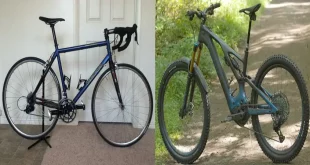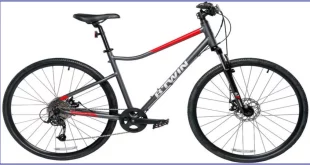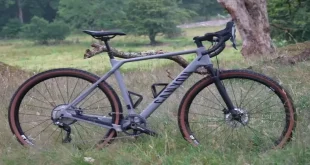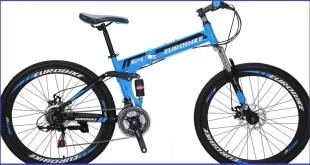Fixed gear bikes are great for commuting due to their simplicity, efficiency, and low maintenance requirements. They offer a direct connection between the rider and the road, allowing for a heightened sense of control and responsiveness.
With no gears to worry about, fixed gear bikes are lighter and more straightforward, making them ideal for urban environments with frequent stops and starts. Additionally, the lack of external components like derailleurs reduces the risk of mechanical failures, ensuring a reliable and hassle-free commute.
Fixed gear bikes promote a more active and engaged riding style, providing an enjoyable and efficient means of transportation. So, whether you’re navigating traffic or zipping through city streets, fixed gear bikes are an excellent choice for commuting.
Pros Of Commuting With Fixed Gear Bikes
Fixed gear bikes have become increasingly popular for commuting, offering a range of benefits for urban riders. In this section, we will explore the pros of commuting with fixed gear bikes. From enhanced control and maneuverability to increased efficiency and simplicity, there are plenty of reasons why these bikes are a great choice for daily commuting.
Additionally, riding a fixed gear bike can improve overall fitness, making it an excellent option for those looking to stay active while getting from point a to point b. Let’s delve into the key advantages of commuting with fixed gear bikes.
Enhanced Control And Maneuverability:
- Quick response: Fixed gear bikes provide immediate responsiveness when it comes to steering and stopping, allowing riders to navigate intricate city streets with ease.
- Agile handling: With a fixed gear setup, riders experience a direct connection between pedaling and bike movement, resulting in effortless maneuverability around traffic and tight corners.
- Confidence in traffic: The ability to precisely control speed and position on a fixed gear bike can increase confidence when riding in congested city traffic, enhancing safety and reducing the likelihood of accidents.
Increased Efficiency And Simplicity:
- Reduced weight: Fixed gear bikes typically have fewer components, resulting in a lighter overall weight. This makes them easier to pedal and maneuver while commuting, especially during uphill climbs.
- Direct power transfer: Since fixed gear bikes do not have a freewheel mechanism, every ounce of pedaling effort is directly transferred to the wheels. This efficient power transfer allows riders to accelerate quickly and maintain a consistent pace for a longer duration.
- Low maintenance: With fewer moving parts, fixed gear bikes require minimal maintenance compared to their geared counterparts. This translates to fewer visits to the bike shop and more time on the road.
Improved Overall Fitness:
- Increased cardiovascular workout: Riding a fixed gear bike demands continuous pedaling, engaging more muscle groups and providing an excellent cardiovascular workout. This can lead to improved fitness levels over time.
- Strength and endurance: The constant resistance of the fixed gear setup forces riders to push through challenges, building leg strength and endurance. Regular commuting on a fixed gear bike can contribute to overall fitness and stamina.
- Core engagement: The need to balance and control the bike without the assistance of gears engages the core muscles, contributing to a stronger and more stable core.
Commuting with a fixed gear bike offers numerous advantages, including enhanced control and maneuverability, increased efficiency and simplicity, and improved overall fitness. Whether you’re navigating busy city streets or aiming to incorporate exercise into your daily routine, a fixed gear bike can be a reliable and enjoyable choice for your commuting needs.
So gear up, hop on your fixed gear bike, and enjoy the ride.
Cons Of Commuting With Fixed Gear Bikes
Lack of gears for different terrains:
- Fixed gear bikes typically have only one gear, which can be limiting when it comes to handling different types of terrains and inclines.
- Without the ability to switch gears, riders may find themselves struggling to maintain a comfortable pace on steep hills or rough surfaces.
Limited braking options:
- Fixed gear bikes often lack the multiple braking options that are available on other types of bikes, such as road bikes or hybrids.
- Riders are usually restricted to using only a front brake or relying on the resistance of the pedals to slow down, which can be less reliable in emergency situations.
Potential discomfort and fatigue:
- Riding a fixed gear bike for long distances can lead to increased discomfort and fatigue compared to bikes with gears.
- The constant pedaling motion combined with the inability to shift gears can put additional strain on the rider’s muscles, leading to muscle fatigue and potential discomfort.
While fixed gear bikes have their advantages for commuting, such as simplicity and low maintenance, it’s important to acknowledge the drawbacks as well. The lack of gears for different terrains, limited braking options, and potential discomfort and fatigue are factors that commuters should consider before opting for a fixed gear bike.
Safety Considerations For Fixed Gear Bike Commuting
Are fixed gear bikes good for commuting? Safety considerations for fixed gear bike commuting are important to keep in mind. Using front and rear lights is crucial for visibility, especially during low-light conditions. Choosing appropriate safety gear such as helmets, reflective clothing, and gloves can greatly enhance safety on the road.
Riding defensively in traffic is also essential to stay safe. Here are some tips to keep in mind:
- Maintain a safe distance from vehicles: By keeping a safe distance, you have more time to react to sudden maneuvers or hazards.
- Use hand signals: Communication with other road users is key. Use hand signals to indicate your intentions to turn or stop.
- Be aware of blind spots: Remember that larger vehicles may have blind spots where they can’t see you. Avoid lingering in these areas to prevent accidents.
- Anticipate and predict: Stay alert and anticipate what other road users might do. This includes checking for turning signals, watching for pedestrians, and being cautious at intersections.
- Obey traffic rules: Follow traffic signals, stop signs, and other rules of the road to ensure your safety as well as the safety of others.
By considering these safety measures, you can enjoy a smoother and safer fixed gear bike commuting experience. Stay safe and happy commuting.
Tips For Choosing The Right Fixed Gear Bike For Commuting
Are you tired of being stuck in traffic during your daily commute? Consider switching to a fixed gear bike. Fixed gear bikes, also known as fixies, have gained popularity among urban commuters for their simplicity, efficiency, and stylish design. But before you make the switch, it’s important to find the right fixed gear bike that suits your commuting needs.
Here are some tips to help you choose the perfect fixed gear bike for your daily travels:
Considerations For Frame Material And Geometry
When it comes to fixed gear bikes, the frame material and geometry play a crucial role in determining the bike’s handling, comfort, and overall performance. Some key considerations include:
- Frame material: Fixed gear bikes are commonly made from steel, aluminum, or carbon fiber. Steel frames offer a smooth ride and durability, while aluminum frames are lightweight and responsive. Carbon fiber frames provide excellent stiffness and shock absorption.
- Geometry: The geometry of the frame affects the bike’s maneuverability and riding position. A more aggressive geometry is suitable for riders who prefer a sportier and faster ride, whereas a relaxed geometry is ideal for those seeking a more comfortable and upright position.
Finding The Right Gear Ratio
The gear ratio of a fixed gear bike refers to the number of teeth on the chainring (attached to the pedals) and the rear cog (attached to the rear wheel). Choosing the appropriate gear ratio is essential for your commuting needs.
Here are some factors to consider:
- Terrain: If your commute involves steep hills or varying elevations, you may want to opt for a lower gear ratio to assist with climbing. On the other hand, a higher gear ratio is more suitable for flat terrains and maintaining speed.
- Riding style: Your riding style also plays a role in selecting the gear ratio. If you prefer a faster pace and more power, a higher gear ratio would be suitable. Conversely, if you prioritize acceleration and control, a lower gear ratio would be more appropriate.
Selecting The Proper Tires For Urban Commuting
The tires you choose for your fixed gear bike can significantly impact your commuting experience. Here are a few considerations when selecting tires for urban riding:
- Width and tread pattern: Opt for wider tires with a tread pattern designed for urban commuting. This provides increased stability, grip, and durability, especially on uneven city roads and surfaces.
- Puncture resistance: Commuting in urban areas often means encountering debris and potential hazards on the roads. Consider tires with puncture-resistant features such as reinforced casings or specialized puncture-resistant layers for enhanced durability and reduced chances of flats.
- Tire pressure: Maintaining the correct tire pressure is crucial for optimal performance. Higher tire pressure reduces rolling resistance but can also result in a harsher ride, while lower tire pressure offers increased comfort but may compromise speed and efficiency.
Remember, when choosing a fixed gear bike for commuting, it’s essential to find a bike that matches your riding style and the road conditions you encounter. Consider frame material and geometry, gear ratio, and tire selection to ensure a smooth and enjoyable commute on your fixed gear bike.
Maintenance And Upkeep Of Fixed Gear Bikes
Fixed gear bikes have gained popularity among urban commuters for their simplicity and efficiency. While they may not be suitable for everyone, they offer several advantages for those willing to give them a try. One important aspect to consider when it comes to fixed gear bikes is their maintenance and upkeep.
In this section, we will explore the key points related to cleaning and lubrication, checking and adjusting chain tension, and how to avoid common issues that may arise with fixed gear bikes.
Regular Cleaning And Lubrication
Keeping your fixed gear bike clean and properly lubricated is essential for its performance and longevity. Here are some key points to remember:
- Regularly clean your bike with a mild soap and water solution to remove dirt, grime, and debris.
- Pay special attention to areas such as the chain, gears, and brakes, ensuring they are free from any build-up.
- After cleaning, make sure to dry your bike thoroughly to prevent rust and corrosion.
- Lubricate the chain and other moving parts using a high-quality bike lubricant. This will reduce friction and ensure smooth operation.
- It is important not to over-lubricate, as excess oil can attract dirt and make your bike more difficult to clean.
Checking And Adjusting Chain Tension
Maintaining the right chain tension is crucial to ensure a smooth and efficient ride. Follow these points to check and adjust the chain tension on your fixed gear bike:
- Start by lifting the rear wheel off the ground, allowing it to spin freely.
- Gently push the chain up and down to check for any excessive movement or slack. A properly tensioned chain should have a slight amount of play but not be too loose.
- If the chain is too loose, you will need to adjust the tension. Most fixed gear bikes have horizontal dropouts or an eccentric hub for easy adjustment.
- Use the appropriate tools to either move the wheel forward or backward to achieve the desired tension.
- Once you have made the adjustment, double-check the chain tension to ensure it is correct.
Avoiding Common Issues With Fixed Gear Bikes
While fixed gear bikes are relatively simple machines, there are a few common issues that may occur. Here are some tips to help you avoid them:
- Regularly inspect your bike for loose bolts or parts. Tighten them as necessary.
- Check your tires for any signs of wear or damage and replace them if needed.
- Keep an eye on the condition of your brake pads and replace them when they become worn.
- If you notice any unusual noises or vibrations while riding, investigate the cause and address it promptly.
- Be mindful of your riding habits and avoid skidding or sudden stopping, as this can put excessive stress on your bike’s components.
By following these maintenance and upkeep tips, you can ensure that your fixed gear bike remains in optimal condition for your daily commute. So, grab your wrench and keep your bike in tip-top shape for an enjoyable and hassle-free ride.
Overcoming Challenges Of Hills And Uphill Commutes
Are you considering using a fixed gear bike for your daily commute? One of the concerns that may come to mind is how well these bikes handle hills and uphill commutes. While it’s true that fixed gear bikes lack gears to assist with climbing, they can still be a viable option for navigating challenging terrains.
In this section, we will explore some techniques and strategies to overcome the challenges of hills and uphill commutes on fixed gear bikes.
Techniques For Hill Climbing On Fixed Gear Bikes
- Utilizing momentum and body positioning: One technique for conquering hills on a fixed gear bike is to generate momentum by pedaling smoothly and evenly. By maintaining a consistent cadence, you can maximize your pedaling efficiency and make the climb easier. Additionally, proper body positioning, such as leaning forward and engaging your core muscles, can help you maintain balance and control.
- Gradual elevation adjustments for a smoother uphill ride: When encountering uphill sections, it’s essential to anticipate the change in resistance and adjust your speed accordingly. Rather than abruptly slowing down, gradually decrease your pedaling intensity to maintain a steady rhythm. This approach allows you to conserve energy while conquering the incline with more ease.
By employing these techniques and adjusting your riding style, you can navigate hills and uphill commutes on a fixed gear bike with confidence and efficiency. Remember to take it at your own pace, listen to your body, and experiment with different strategies to find what works best for you.
With practice, you’ll discover that fixed gear bikes can be a great choice for your daily commute, regardless of the terrain you encounter. So, embrace the challenge and enjoy the ride.
Additional Accessories For Fixed Gear Bike Commuting
If you’re considering using a fixed gear bike for your daily commute, you may be wondering about the additional accessories that can enhance your experience. From choosing the right saddle for comfort to essential accessories like fenders and racks, there are several options to consider.
Additionally, using a bike lock and helmet can provide added safety and peace of mind on your daily rides. Let’s delve into these additional accessories and the benefits they bring to your fixed gear bike commuting.
Choosing The Right Saddle For Comfort:
When it comes to commuting on a fixed gear bike, comfort is key. Here are some important points to consider when choosing the right saddle:
- Opt for a saddle with ample padding and support to cushion your ride.
- Look for a saddle that matches the width of your sit bones to ensure optimal comfort.
- Consider the shape and contour of the saddle, as it should provide proper weight distribution and reduce pressure points.
- Test out different saddles to find the one that suits your body and riding style best.
Essential Accessories Like Fenders And Racks:
To make your fixed gear bike commuting easier and more practical, consider investing in essential accessories like fenders and racks. Here’s why they are beneficial:
- Fenders help protect you from splashes and mud when riding on wet roads, keeping you clean and dry throughout your commute.
- Racks provide a convenient way to carry your belongings, such as a backpack or groceries, without compromising your riding experience.
- With the addition of racks, you can enjoy a more comfortable and balanced ride, as the weight is distributed evenly over the bike.
Benefits Of Using A Bike Lock And Helmet:
Safety should always be a priority when commuting, regardless of the type of bike you choose. Here’s why using a bike lock and helmet is essential:
- A bike lock is crucial for securing your fixed gear bike and deterring potential thieves, giving you peace of mind when parking it outside.
- Wearing a helmet protects your head in case of an accident, minimizing the risk of serious injury.
- By using a bike lock and helmet consistently, you set a good example for other cyclists and promote a culture of safety.
By considering these additional accessories, you can enhance your fixed gear bike commuting experience, ensuring comfort and safety along the way. So, equip yourself with the right saddle, fenders, racks, bike lock, and helmet, and enjoy a convenient and secure ride every day.
Frequently Asked Questions On Are Fixed Gear Bikes Good For Commuting?
Are Fixed Gear Bikes Suitable For Commuting?
Yes, fixed gear bikes are suitable for commuting as they are lightweight, low-maintenance, and offer a direct connection to the road. They provide better control, agility, and are perfect for short distance journeys in urban areas.
Can Fixed Gear Bikes Handle Different Terrains During Commuting?
Fixed gear bikes are versatile enough to handle different terrains during commuting. However, due to their simplicity, they may not be ideal for steep hills or rough surfaces. It is recommended to choose a gear ratio suitable for your commute route to ensure smooth rides.
Are Fixed Gear Bikes Safe For Commuting?
While fixed gear bikes have a learning curve due to their lack of freewheel mechanism, they can be safe for commuting with proper technique and precautions. Constant awareness, using brakes effectively, and ensuring compatibility with traffic laws are necessary for a safe commuting experience.
Do Fixed Gear Bikes Require Special Skills To Ride For Commuting?
Riding a fixed gear bike for commuting requires some basic skills such as learning to pedal continuously and mastering control without coasting. With practice, these skills can be acquired, making fixed gear bikes a viable option for both experienced and new riders.
Can Fixed Gear Bikes Offer A Faster Commute Compared To Other Bikes?
Fixed gear bikes can potentially offer a faster commute compared to other bikes due to their direct power transfer and efficiency. However, speed also depends on the rider’s fitness level, terrain, and gear ratio choice. It is essential to choose a gear ratio suitable for your intended riding speed.
Conclusion
Fixed gear bikes can be a great option for commuting, but it’s essential to consider your specific needs and preferences. These bikes offer several advantages, such as their simplicity, low maintenance requirements, and lightweight design. They are perfect for shorter city commutes and can provide an enjoyable and efficient ride.
However, it’s important to note that they may not be suitable for everyone. If you live in a hilly area or prefer a more relaxed and comfortable ride, a fixed gear bike may not be the best choice. Ultimately, the decision of whether fixed gear bikes are good for commuting comes down to personal preference and the specific conditions of your commute.
It’s always wise to test ride different bikes and consult with experienced cyclists before making a final decision.
 CommutingLife Explore The World On Two Wheels
CommutingLife Explore The World On Two Wheels





